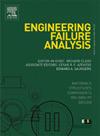Temperature-dependence of strengthening and wear mechanisms for GW42K alloy fabricated by wire-arc directed energy deposition
IF 4.4
2区 工程技术
Q1 ENGINEERING, MECHANICAL
引用次数: 0
Abstract
Here, we investigated the microstructure, mechanical properties, and wear performance of Mg-4.6Gd-1.8Y-0.424Zr (wt.%) (GW42K) alloy fabricated using wire-arc directed energy deposition (WA-DED). The results indicate that the grains of the as-deposited alloy are equiaxed. There are many nanoscale β“ phases in the as-deposited alloy because of the cyclic thermal history. As the ambient temperature increases from 20 °C to 200 °C, affected by dynamic recrystallization, some fine grains appeared at the top of the worn sample, which promoted the wear mechanism of the alloy from mild plastic deformation to severe plastic deformation, thereby improving the high-temperature wear resistance of the alloy. After 200 °C/200 h artificial aging, β” precipitates change into β’ precipitates. According to the mechanical performance test at 200 °C, the yield strength of the alloy increases from 105.1 MPa to 161.3 MPa. Especially, the yield strength of the heat-treated alloy at 200 °C is higher than that at 20 °C, with increases of 17.1 %. By analyzing the strengthening mechanism caused by the β’ phase, it was confirmed that these two abnormal high-temperature strength phenomena are caused by the β’ phase. This work reveals the temperature dependence of the strengthening and wear mechanism of WA-DED GW42K alloy, which can provide a reference for the high-temperature application of Mg alloys.

求助全文
约1分钟内获得全文
求助全文
来源期刊

Engineering Failure Analysis
工程技术-材料科学:表征与测试
CiteScore
7.70
自引率
20.00%
发文量
956
审稿时长
47 days
期刊介绍:
Engineering Failure Analysis publishes research papers describing the analysis of engineering failures and related studies.
Papers relating to the structure, properties and behaviour of engineering materials are encouraged, particularly those which also involve the detailed application of materials parameters to problems in engineering structures, components and design. In addition to the area of materials engineering, the interacting fields of mechanical, manufacturing, aeronautical, civil, chemical, corrosion and design engineering are considered relevant. Activity should be directed at analysing engineering failures and carrying out research to help reduce the incidences of failures and to extend the operating horizons of engineering materials.
Emphasis is placed on the mechanical properties of materials and their behaviour when influenced by structure, process and environment. Metallic, polymeric, ceramic and natural materials are all included and the application of these materials to real engineering situations should be emphasised. The use of a case-study based approach is also encouraged.
Engineering Failure Analysis provides essential reference material and critical feedback into the design process thereby contributing to the prevention of engineering failures in the future. All submissions will be subject to peer review from leading experts in the field.
 求助内容:
求助内容: 应助结果提醒方式:
应助结果提醒方式:


